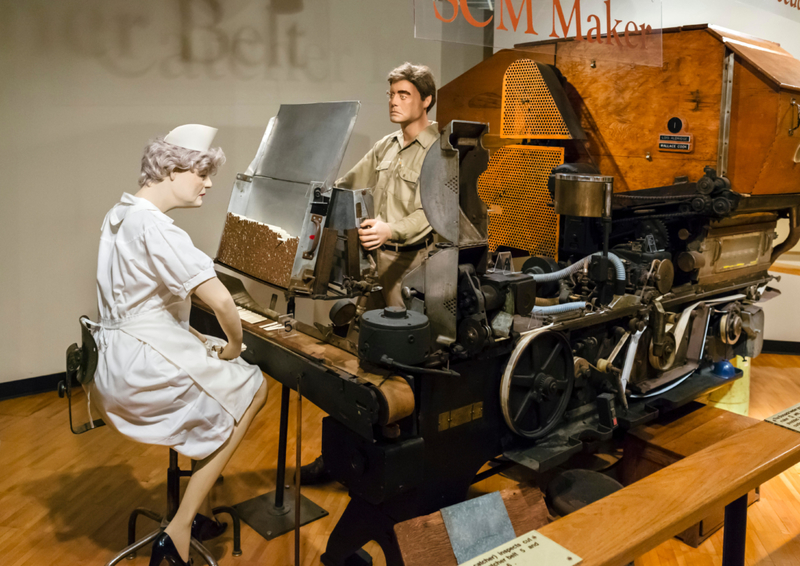
Of course, there was widespread marketing and advertising. But the force that helped cigarettes conquer the market was technology. Cigarette-rolling machines were born in the 19th century and took cigarettes to the masses. Before this, companies were rolling a maximum of four to five cigarettes per minute – not enough to bring in profit. The rolling machines in 1880 ushered an era of change.
Cigarette Machines Revolutionized the Industry
Before 1880, most people rolled cigarettes by hand. In 1867, one of the first cigarette-rolling machines appeared. It was called the Susini but proved inconsistent and found very few takers. The industry changed forever when James Bonsack built a machine that could roll 210 cigarettes per minute or 20,000 cigarettes in 10 hours. How did the Bonsack machine work? It created one long cigarette that could be divided into smaller, appropriate sections. Pretty soon, manufacturers got faster at rolling cigarettes per minute.

Fast forward to today, and cigarette rolling machines have only grown more sophisticated. Some machines can roll an astonishing 20,000 cigarettes per minute. Cigarette smoking, however, has declined in many countries. Public health campaigns and awareness grew stronger over the years. Many people ditched the habit. It’s safe to say that technology was the key to the rise of cigarettes and the resulting impact on public health. Technology helped cigarettes go from small-scale to mass-market success. Advertising magnified the appeal by making cigarette smoking glamorous. Soon, everyone who’s anyone needed to smoke. The rise of cigarette addiction is inextricably linked to the invention of the rolling machine.